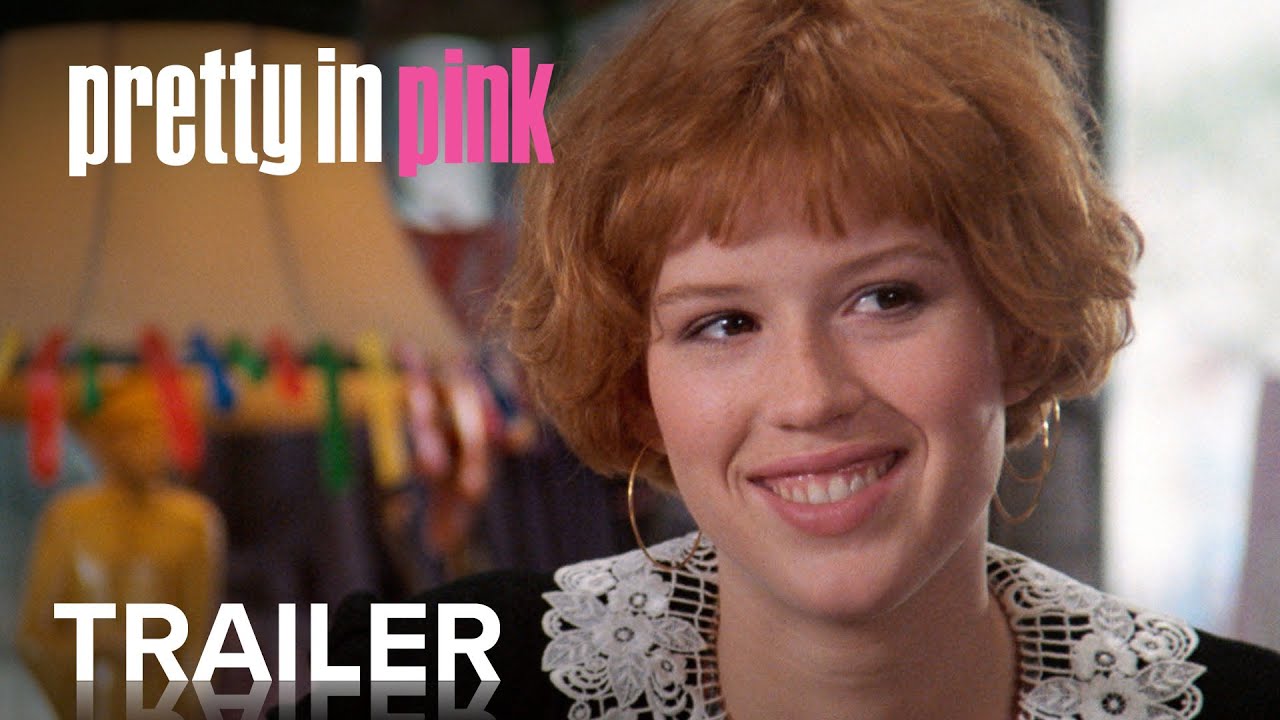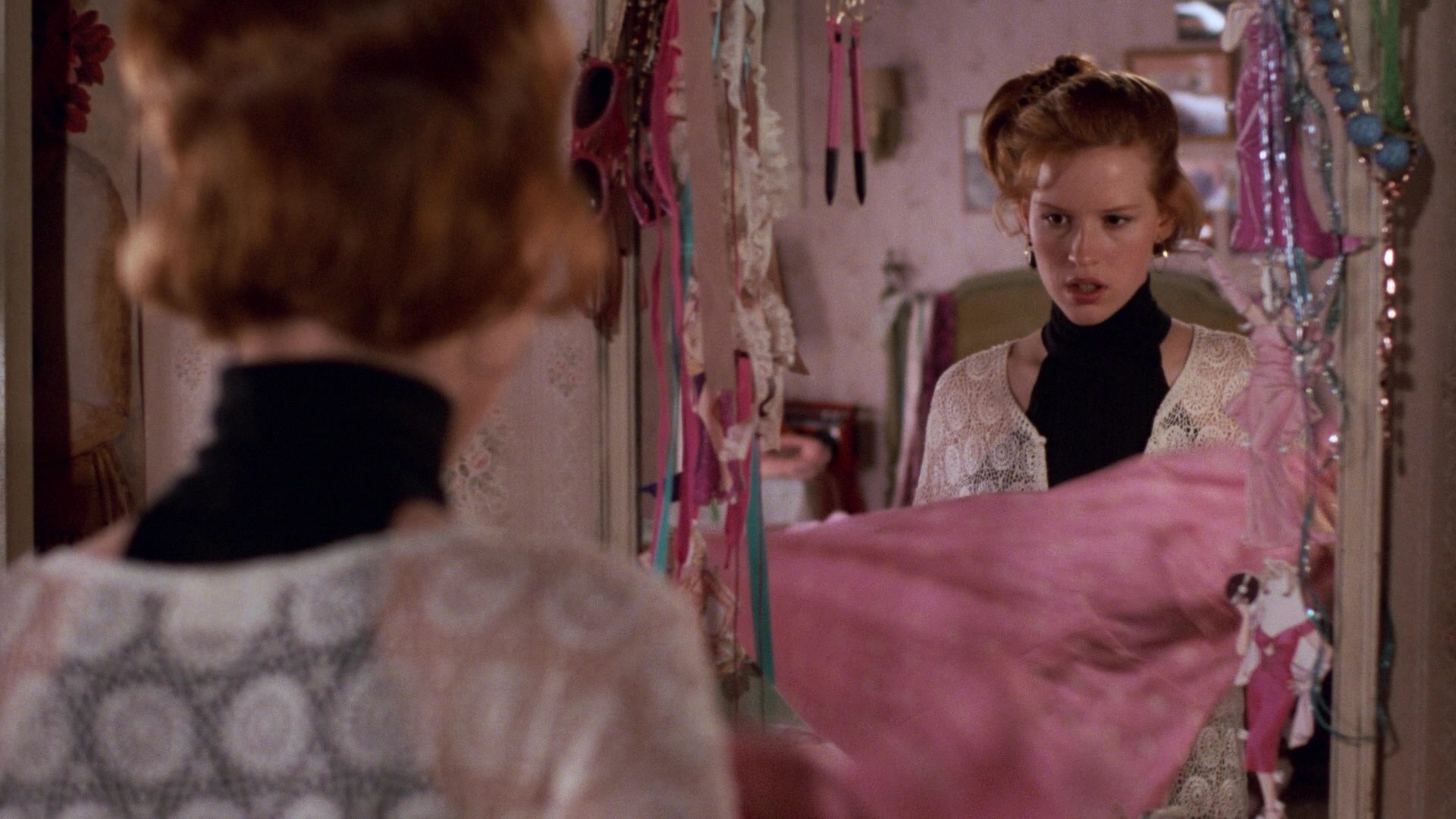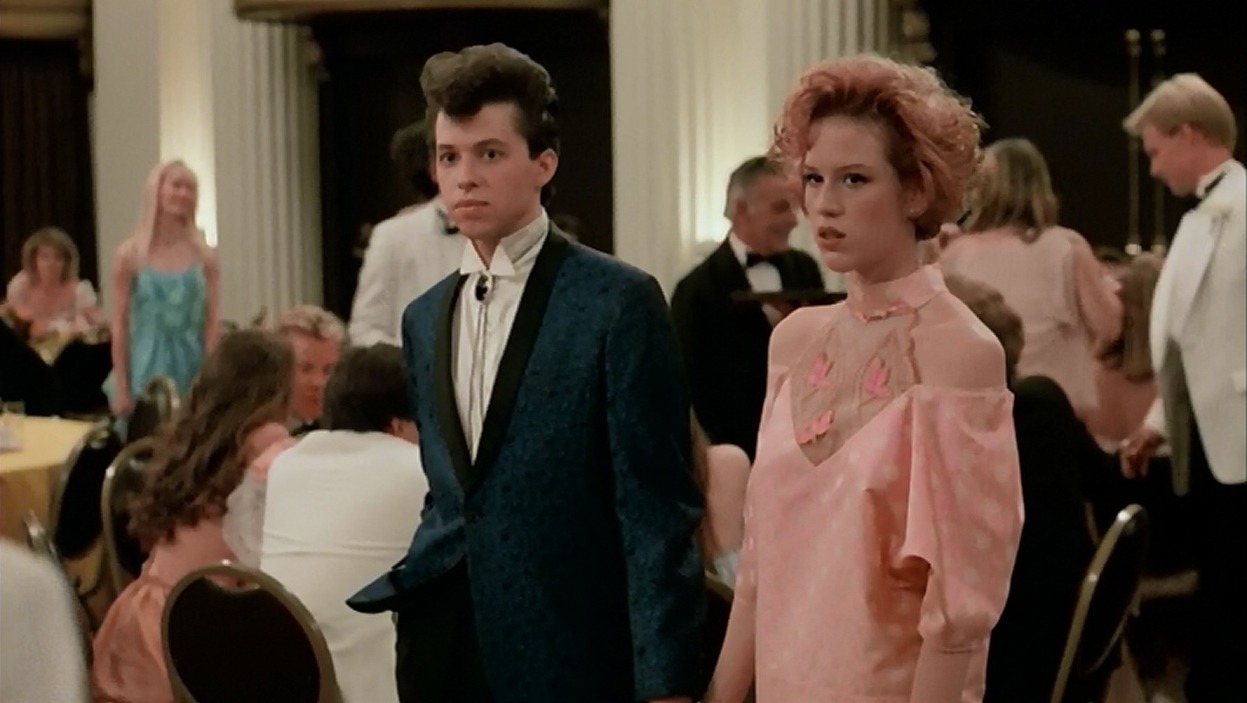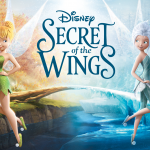Pretty in Pink (1986)

Pretty in Pink is a 1986 American teen romantic comedy-drama film written by John Hughes and directed by Howard Deutch. Set in the 1980s, the movie explores themes of love, friendship, and social class divisions within American high schools. The film stars Molly Ringwald as Andie Walsh, a high school girl caught between two very different worlds. Pretty in Pink has become a beloved classic, often regarded as a quintessential “Brat Pack” movie, a term used to describe a group of young actors who starred in popular teen films during that era.
The story follows Andie Walsh, a bright but financially struggling teenager who attends a wealthy high school. She is caught in a love triangle between two boys: Blane McDonough, the charming but privileged popular kid, and Duckie Dale, her quirky, loyal best friend. As Andie navigates her feelings for both boys, she also grapples with societal expectations, her social status, and the pressure to fit in. The film showcases her journey of self-discovery and finding the courage to stay true to herself, despite the challenges that come with her social class differences.
One of the central themes of Pretty in Pink is the division between social classes. Andie is from a working-class family, while Blane comes from an affluent background, and this contrast becomes a significant barrier in their relationship. The film explores how social status can influence romantic relationships and friendships, with Andie constantly struggling to reconcile her feelings for Blane with her awareness of their social differences. At the same time, the unwavering loyalty of Duckie, Andie’s best friend, highlights the importance of friendship and staying true to those who truly understand and support you.
The romantic tension in Pretty in Pink is palpable, with both Blane and Duckie vying for Andie’s affection. While Blane represents the world of wealth and social popularity, Duckie embodies the quirky, loyal, and somewhat rebellious side of Andie’s life. The contrast between the two love interests creates a complex emotional landscape for Andie, who must ultimately decide between the safe choice (Duckie) and the more complicated, yet exciting, option (Blane). This tension captures the complexities of teenage love, with all its uncertainty and emotional highs and lows.

Pretty in Pink has left a lasting cultural impact and continues to resonate with audiences decades after its release. The film is often considered a quintessential ’80s teen movie, alongside others like The Breakfast Club and Sixteen Candles. Its exploration of teen angst, societal expectations, and the pursuit of love and belonging has made it a touchstone for many who grew up in that era. The characters, particularly Andie, Duckie, and Blane, have become iconic, and the film’s fashion—especially Andie’s pink prom dress—has had a lasting influence on pop culture.

In conclusion, Pretty in Pink is a timeless classic that captures the complexities of teenage life, love, and friendship. Through its memorable characters and exploration of social class, the film offers both entertainment and a poignant commentary on the challenges faced by young people as they navigate the pressures of high school and society. The movie’s blend of romance, comedy, and drama has made it an enduring favorite, cementing its place as one of the most beloved teen films of the 1980s. Pretty in Pink remains an important cultural artifact, offering valuable insights into the era’s social dynamics while still feeling relevant to modern audiences.











